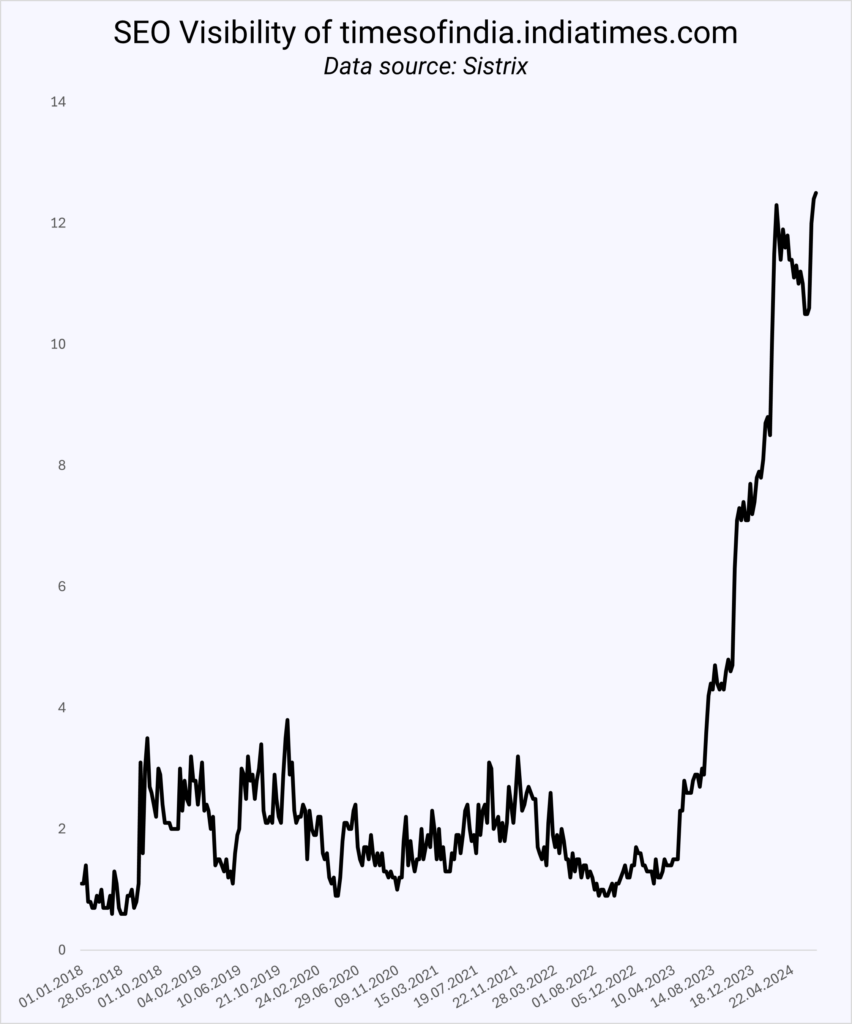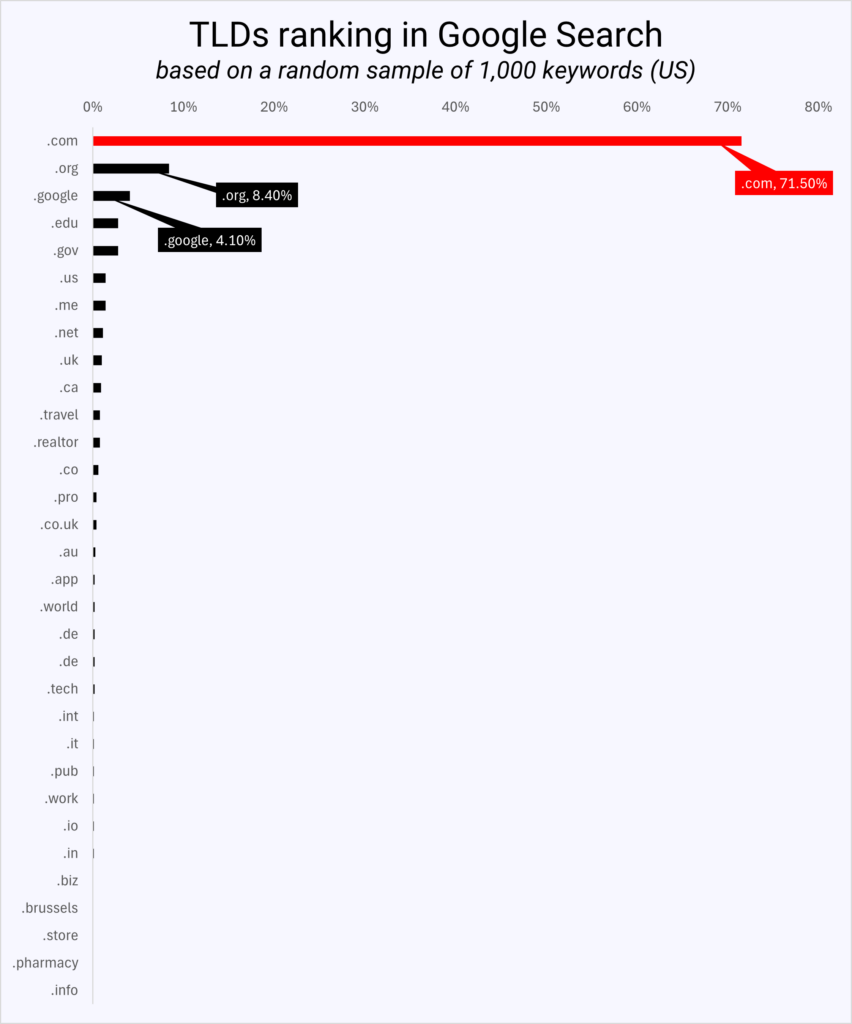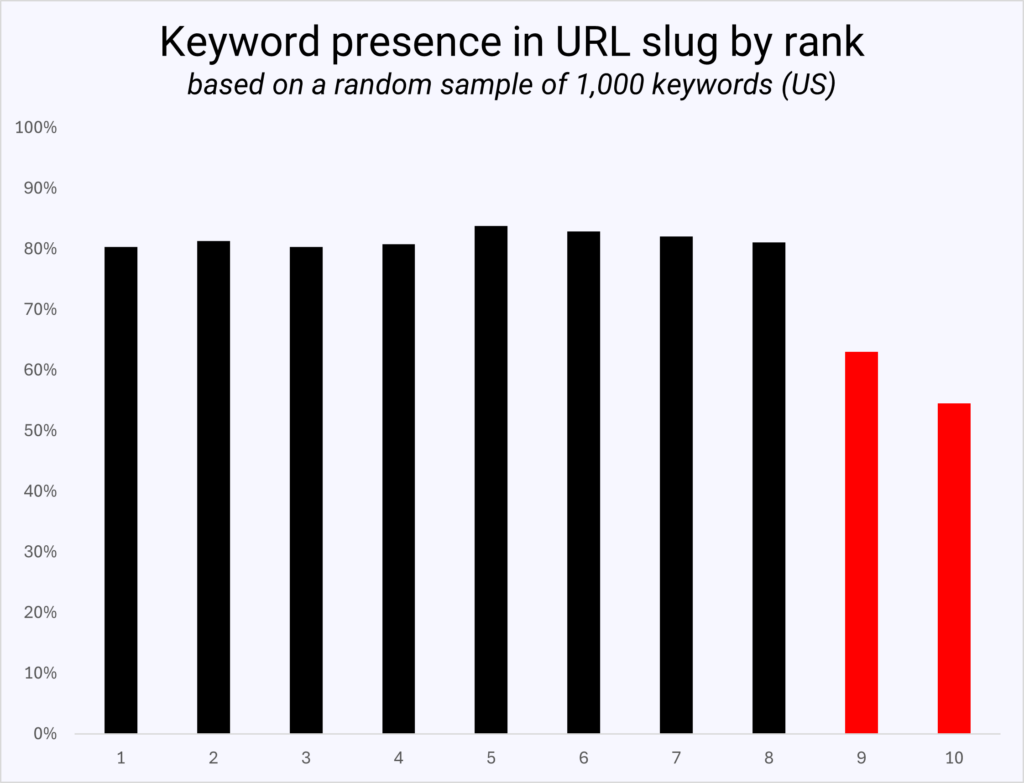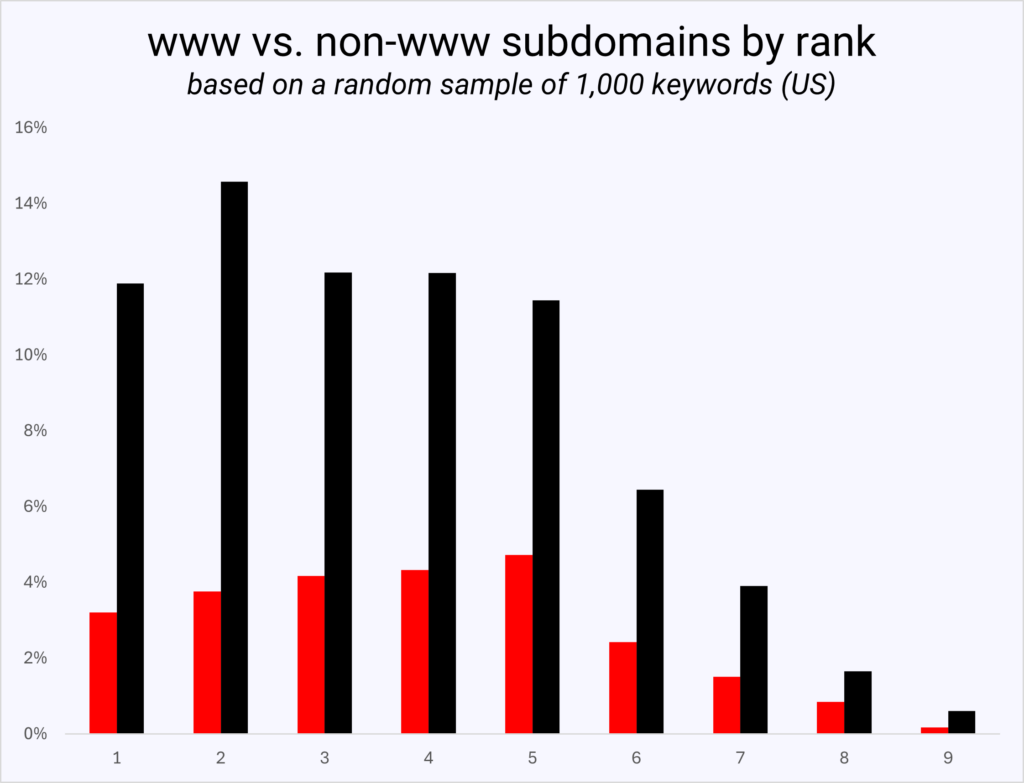

Last updated on

Since the Times Of India achieved a fourfold increase in organic growth within the US over 12 months, there has been a notable rise in the visibility of ccTLDs (international domains) ranking in the US.

The proliferation of international domains appears logical, especially with Google experimenting with country labels that indicate where a site operates.1
Google has also expanded its Translated Results feature:
Translated Results is a Google Search feature that automatically translates the title link and meta description into the local language of the user, thereby enabling a website published in one language to be accessible to searchers in another language. If a user clicks on the link of a translated result, the webpage itself will also be automatically translated.2
Perhaps Google aims to increase the presence of international domains in US Search results. If a site in English from another country provides more relevant content for an English-speaking audience, it seems reasonable to consider ranking it.
International domains may be particularly relevant when geographical location is less critical. For instance, publishers could potentially rank in other countries with the same language, whereas SaaS or ecommerce companies that do not cater to specific countries may not be as suitable. This could broaden the scope for “foreign” domains to compete.
I collected 1,000 random keywords from a diverse range of queries spanning travel, ecommerce, publishing, SaaS, services, finance, health, and other industries.
The analysis revealed 4,538 domains appearing in organic search results. My focus was primarily on the top five positions on Google, as URLs ranking higher than this threshold typically attract the most traffic, despite the prevalence of SERP features today.

According to the data, .com domains dominate the top five positions, accounting for 71.8% of rankings, followed by .org (8.4%), .google (4.1%), .edu, and .gov. Among the domains analyzed, only 52 were from the UK, 11 from Canada, and three from India.
Based on these findings, it’s evident that international domains, such as the Times of India performing well in the US, represent more of an exception than a common occurrence.
The dataset of 1,000 randomly selected keywords offers deeper insights into the influence of TLDs, subdomains, and URL slugs on organic search rankings.
Impact of TLDs
I aimed to determine whether the choice of TLD (.com, .net, .org, etc.) affects ranking. Traditionally, ccTLDs (country-code TLDs like .fr) are perceived to have a better chance of ranking in their respective countries compared to gTLDs (generic TLDs like .com), which are not tied to any specific country.
I conducted correlation analyses between TLDs and rankings across 7,678 results, while controlling for factors such as backlinks, content quality, content volume, and rank distribution. However, I did not find any significant relationships. Here are some notable observations:

The ranking advantage of .com domains is debatable. Their familiarity to users due to widespread exposure may encourage more links, but any potential rank boost from Google is likely outweighed by factors such as content quality, backlinks, brand recognition, and user experience.
URL Slugs Matter A Bit
I wanted to explore whether including the keyword in the URL slug (the part after the domain) has any impact.
The data indicates that there is no significant advantage to having the keyword in the URL slug for ranking in the top eight positions. However, URLs ranking in positions 9 and 10 less frequently included the keyword, suggesting that its relevance diminishes for lower-ranking results.

In summary, checking for the keyword in the URL or meta title has been and remains a straightforward SEO practice.
Based on my experience, dedicating effort solely to matching the keyword in the slug isn’t justified if it requires a redirect. It’s a consideration that should carry more weight when initially creating a new URL.
Subdomains Matter A Lot
Finally, I wanted to investigate whether (non-www) subdomains affect ranking.
According to Google’s leaked ranking factors, exact-match domains (EMDs) with keywords were devalued many years ago. Additionally, Google treats subdomains separately from root domains due to their distinct DNS addresses.

From the data I analyzed, URLs with www appear approximately three times more frequently in the top five search results compared to non-www subdomains.
This disparity decreases as you move down the search engine results pages (SERPs), indicating that there may indeed be an advantage to avoiding the use of subdomains. However, it’s important to balance this consideration with the non-SEO benefits that subdomains can provide.
Original news from SearchEngineJournal